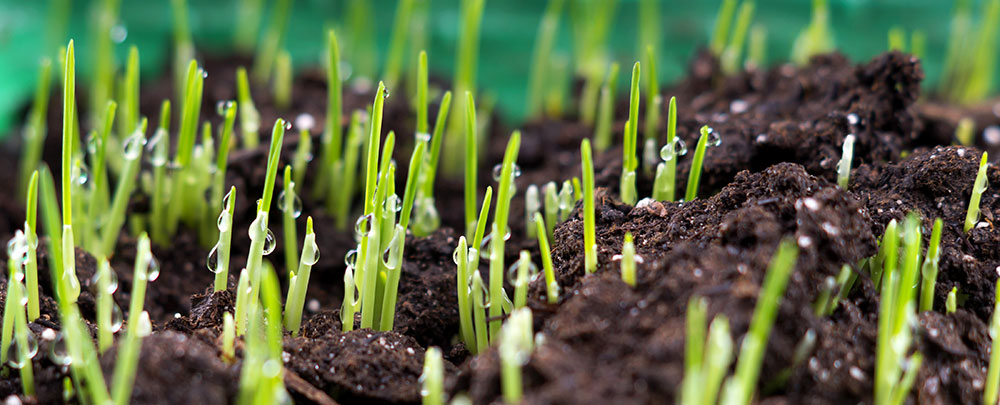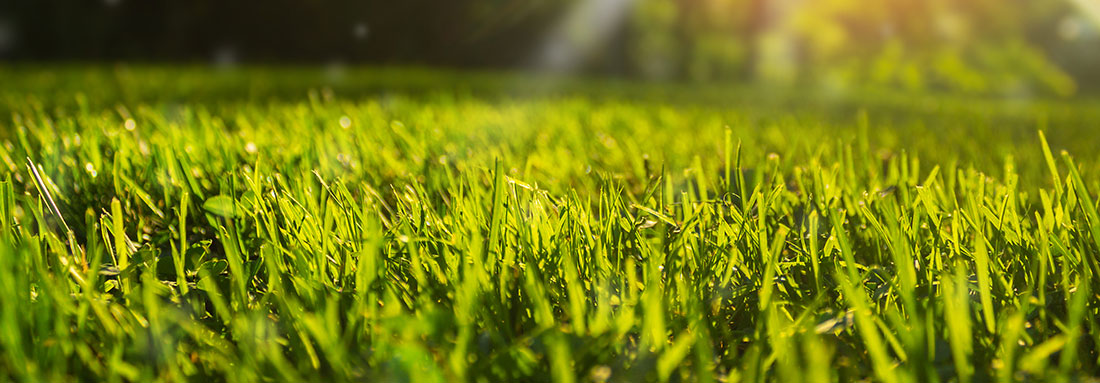Planting Grass Seed
When is the Best Time to Plant a New Lawn with Grass Seed?
If you’re planning on planting a new lawn or doing substantial overseeding to cover bare spots in your yard, the process actually starts in the summertime.
Starting a new lawn in the summer gives you time remove old grass and weeds, and to properly prepare the soil before planting. In Kansas, the new seed should actually go down in early fall, but the prep work can take several weeks.
Planting in the early fall gives the seeds plenty of time to germinate, allowing roots to establish themselves before winter arrives. It’s also a time when temperatures aren’t as hot, and rain storms aren’t as intense.
Killing Your Old Lawn & Weeds
Before planting, it’s best to first kill off your old lawn with a strong herbicide. This should be done mid to late summer, about a month before you plant the new grass. The timeframe required before planting can vary depending on the chemical process used, but 30 days is typical.
After killing the existing turf, you should thoroughly rake the yard, removing the dead grass, weeds and debris.
Preparing the Soil
After cleaning debris, loosen the top half an inch of soil evenly across the lawn. If your soil is very compacted and this can’t be done with a rake, you may need use a core aerator or tiller to loosen the dirt. If you use machinery, you’ll still need to thoroughly rake the lawn to fill in holes and create a level surface. Make sure there are no large clumps of dirt left before planting. Any clump larger than pea sized is too large.
Soil preparation is an important step to ensure water and nutrients can access your new lawns root system. It’s labor intensive, but worth doing correctly.

This is also a good time to ensure your lawn is properly graded also. A 1-3 degree slope away from buildings is suggested. A smooth slope will also help water run off more consistently, reducing areas that may dry out more quickly, or collect water, which can lead to disease.
For best results, you should test the quality of your soil and add nutrients to best suit the type of grass you’re planting. The K-State extension office has a soil testing lab, and information about the proper pH levels for different types of grass. In the Wichita area, Fescue is a popular grass choice, or for a low maintenance native grass, you might consider Bermuda grass. Learn more about grass that grows well in Kansas here.
Whether you test your soil or not, you might still consider applying a slow-release starter fertilizer before planting your seeds. A starter fertilizer will add add nutrients and promote early growth. Starter fertilizers can be purchased to balance pH levels if your soil test indicates that is needed.
Plant the New Grass Seed
Next, it’s time to plant the seed. Watch the weather and try to plant when there is no rain in the forecast for the next several days, and ideally on a day with light wind. This will help keep the seed in place.
Use a broadcast or drop spreader to evenly distribute the seed on your lawn. It’s important the seed be distributed properly so you end up with good grass coverage. Areas with too much seed can lead to bare spots, as the seeds can’t get adequate water. Follow the instructions included with your specific seed for best results.
After putting the seed down, you can apply a very thin layer of soil on top of the seed.
Watering the New Seed
After you’ve planted your new grass, you’ll want to be sure to water properly. In Kansas, this means making sure the soil is moist all of the time, to a depth of about two inches. Don’t over water, the ground should not have pools or be overly soggy, just make sure it doesn’t dry out.
You’ll likely need to water for 5-10 minutes at a time, 3-6 times per day starting off. You can reduce the frequency as the seed begins to grow. Keep a close eye on the soil and make sure it is always moist the first couple of months after planting. Also, monitor closely to ensure there are no low areas where water pools excessively. These can be easily leveled early in the process. Adjust watering accordingly for rain.
Post Planting Care
You’ll want to avoid foot traffic on the new lawn for at least six weeks. This will allow the roots to establish themselves. You should also not apply any harsh chemicals for the first couple of months.

Mowing the New Lawn
Don’t mow the lawn until it’s about three inches high. Be sure to check the recommendations for your type of grass before mowing. When you do mow, use the highest setting on your mower the first couple of times. Then adjust based on the grass type. Cutting too short can weaken the young blades, and promote weed growth. Make sure your mower blade is sharp. A crisp cut is important for grass health, this is true for new and established lawns.
After about two months you should have a lush, green lawn. You can begin a regular maintenance plan at this point.
From start to finish it can take 6-8 weeks to plant and prepare a new lawn. If you’d rather have a professional plant or overseed your, give us a call for a free estimate:
